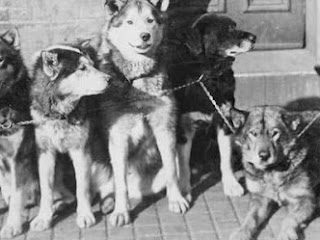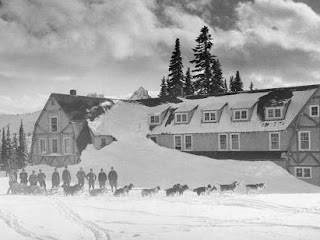During WWI the French army launched a secret mission involving sled dogs. Just recently, almost 100 years later, did the French reveal information about the mission for the benefit of the documentary Sled Dog Soldiers.
 |
| Sled dogs in the French army. |
The winter of 1914 was incredibly hard on the French soldiers in the Vosges mountains due to heavy snowfall. Traveling by vehicle or horse was impossible, meaning the troops could not receive important supplies such as food, warm clothes and ammunition. It also meant they could not transport their wounded soldiers.
Captain Louis Joseph Moufflet and Lieutenant Rene Robert Haas, who use to work as gold diggers in Alaska, knew sled dogs would be the perfect solution in preventing another disastrous winter. After convincing the French army to use the dogs, a secret mission was organized to bring 400 of the best sled dogs to France. They only had a few months to accomplish this feat before the winter of 1915 set in.
Moufflet went to Quebec City, Canada to find the majority of the dogs and Haas, who also happened to be an experienced musher, went to Nome, Alaska. After countless trials and tribulations, the two men found over 400 dogs.
Getting the dogs to France was not an easy task. First, Haas had to get his 100 plus dogs to Quebec. They took a boat from Nome to Vancouver, Canada, then a train to Quebec. All the dogs survived the long trip. Until the two Officers were able to find a boat to get them to France, which turned out to be quite a challenge at that time, they hid the dogs in a hangar - next to an explosive-testing facility that ended up benefiting the dogs by getting them use to explosions. Fortunately they were able to find a boat just in the nick of time. In fact, their boat was the last to leave Quebec City that winter before the St. Laurence River froze over. They arrived on the Vosges Front on December 15, 1915. Four dogs lost their lives during the 6,000 mile journey.
The dogs definitely proved to be helpful. The best distance achieved, with only nine dogs and close to 700 pounds of weight on the sled, was almost 75 miles in one day. In another successful mission, the sled dogs were able to transport 90 tons of ammunition in four days.
The sled dogs went on to help the French soldiers survive the winters and win multiple battles throughout WWI, but like humans, many died in combat.

















